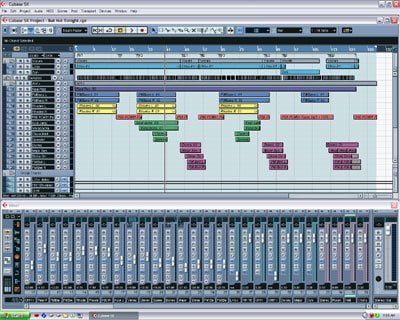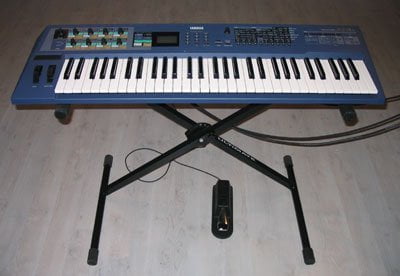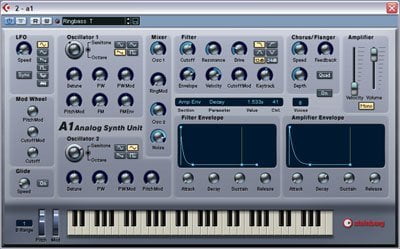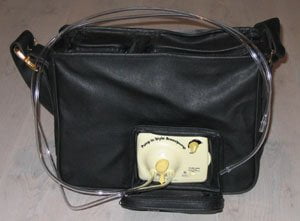Brian Hazard of Color Theory gives us some insight into the process of recording Color Theory presents Depeche Mode
Where was the album recorded?
The entire album was recorded, mixed, and mastered in my studio, 11th Records Studios, located in Huntington Beach, California.
Can you tell us what gear you use? What mixer, microphones, synthesizers, and so on?
Everything is recorded to hard disk using Steinberg’s Cubase SX2 software. I built the computer myself, but any desktop computer you can buy these days is capable of running at least 24 tracks right off the shelf. The audio comes in through an Aardvark Q10 audio interface, and out through Mackie HR824 monitors. All effects processing is done by the computer with the help of two Universal Audio UAD-1 cards, so I don’t need an external mixer. Everything stays in the digital domain throughout the entire recording, mixing, and mastering process.

I own a few expensive microphones, but I chose the $200 Rode NT-1 for my vocals. It flatters my voice and blends well into an electronic mix. On my previous album, which I recorded with all acoustic instruments, I used an AKG 414B-ULS. It just depends on the project.
I own a grand total of one synthesizer – the Yamaha An1x. It’s a physical modeling synthesizer, which means it creates sound by mathematically approximating the circuitry of real analog gear. Specifically, it’s modeled after the Prophet 5, but it seems like it can produce any sound I’m looking for. I don’t use any of the onboard effects, because the software plug-ins are much higher quality.

Piano duties on “But Not Tonight” and “World Full of Nothing” were handled by my Yamaha P80, a digital 88-key stage piano. The piano on “Sister of Night” was recorded using the GigaPiano by my good friend Keith Gillard of Fidgital. I played the part into Cubase and e-mailed the MIDI file to Keith in Vancouver, Canada. He ran it through his software sampler and transferred the resulting audio file to the FTP server I host on my studio computer.
Everything else you hear on the album is sampled. The samples (short audio recordings) come from a variety of sources, from commercially available sample CDs to recordings I made myself.
As you can see, I’m a minimalist. I work best when I give myself a limited number of options to choose from. Too much freedom can be crippling.
What’s the story behind “I Am You (GameBoy mix)”?
I had a bit of a false start in recording “I Am You”. I thought it might be fun to experiment with software synthesis, so I started building up the mix with the A1, one of the software synths that comes installed with Cubase. After the music bed was complete, I decided that it just didn’t have the weight and power that the song demanded. It reminded me of Donkey Kong. So I started again from scratch to create the mix that you hear on the album. Aftewards, I stuck the vocals in the old music bed and dubbed it the GameBoy mix, because it sounds like a video game. Or maybe it’s electroclash.

Can you tell us about some of the special effects you created for the album?
One of my favorite parts of the album is the bridge of “World Full of Nothing”. I created a haunting, spinning, echo of the lead vocal with the Doppler, a neat plug-in by Waves. You may remember learning about the doppler effect in physics class. Sound waves expand or contract depending on the motion of the sound source. That’s why the ice cream truck always sounds out-of-tune. The plug-in simulates the effect on any sound source, giving you full control over direction and speed.

Brian’s voice without effects:
Brian’s voice with the Doppler:
I said earlier that “I Am You” demanded a powerful mix. The chorus explodes in a wash of what sounds like electric guitars. The effect was created by running the An1x through an amp simulator – the Universal Audio Preflex. The Preflex has all sorts of controls that only a guitarist would understand, so I just fiddled with the knobs until I found what I was looking for. Recording engineers often mic amps and record synthesizers through them. This plug-in provides a handy shortcut.

The An1x without effects:
The An1x with the Preflex:
My wife and I are blessed with a beautiful 6-month old boy. I’m often asked if fatherhood has affected my music. Of course it has, in many ways, but now I can point to something concrete – the breast pump. The breast pump holds down the groove in the bridge of “Sweetest Perfection”. It stuck out too much without effects, so I ran it through the Preflex and added a long reverb to blend it in.

The breast pump alone:
The breast pump in the mix:
Listen to the album in its entirety here.
